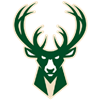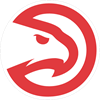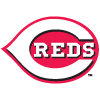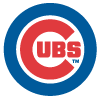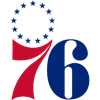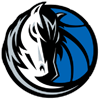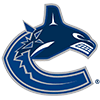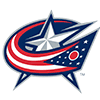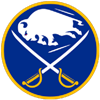In perusing through a number of different stats, I thought I'd share some observations.
0-5
Chris Sale's W/L record headed into May.
Meanwhile, Andrew Cashner is 4-1. This is crazy, but let's compare the two through April 29:
| Metric | Sale | Cashner |
| W-L record | 0-5 | 4-1 |
| ERA | 6.30 | 4.18 |
| xFIP | 4.29 | 5.11 |
| WHIP | 1.40 | 1.39 |
| K/9 | 9.6 | 5.6 |
| BB/9 | 3.0 | 3.6 |
| HR/9 | 2.1 | 1.4 |
| Avg FB velo | 92.3 | 93.4 |
Not shockingly, xFIP predicts regressing for Cashner and improvement for Sale, but what else can we read into the underlying data? See what you think about the following statements:
Something is mechanically or physically off with Sale. A 2.4 mph year-over-year drop in velocity is troubling. Sale is also not showing near the control he's showed in the past, as his BB/9 is a full one point higher or more than the rates he's put up consistently over the past six seasons. I've seen him get up to 97 at times, so we know he can reach back and sling it, but the velocity overall is clearly down. Remember, shoulder issues limited Sale to 29 second-half innings a year ago.
Cashner won't keep pace and go 24-6. Well yeah, considering he plays for the Orioles and has never won more than 11 games in a season, that's safe to say. His very low 6.9 percent swinging strike rate is right in line with past finishes, and his 44.7 percent hard hit rate is well above his 31 percent career mark, so
In perusing through a number of different stats, I thought I'd share some observations.
0-5
Chris Sale's W/L record headed into May.
Meanwhile, Andrew Cashner is 4-1. This is crazy, but let's compare the two through April 29:
| Metric | Sale | Cashner |
| W-L record | 0-5 | 4-1 |
| ERA | 6.30 | 4.18 |
| xFIP | 4.29 | 5.11 |
| WHIP | 1.40 | 1.39 |
| K/9 | 9.6 | 5.6 |
| BB/9 | 3.0 | 3.6 |
| HR/9 | 2.1 | 1.4 |
| Avg FB velo | 92.3 | 93.4 |
Not shockingly, xFIP predicts regressing for Cashner and improvement for Sale, but what else can we read into the underlying data? See what you think about the following statements:
Something is mechanically or physically off with Sale. A 2.4 mph year-over-year drop in velocity is troubling. Sale is also not showing near the control he's showed in the past, as his BB/9 is a full one point higher or more than the rates he's put up consistently over the past six seasons. I've seen him get up to 97 at times, so we know he can reach back and sling it, but the velocity overall is clearly down. Remember, shoulder issues limited Sale to 29 second-half innings a year ago.
Cashner won't keep pace and go 24-6. Well yeah, considering he plays for the Orioles and has never won more than 11 games in a season, that's safe to say. His very low 6.9 percent swinging strike rate is right in line with past finishes, and his 44.7 percent hard hit rate is well above his 31 percent career mark, so the regression suggested by his xFIP should propel that ERA well north of 4.18 soon.
14
Home runs by Christian Yelich and Cody Bellinger.
Bellinger – Anyone watching the playoffs last year saw Bellinger get overwhelmed by power pitchers, particularly those who could throw in the mid-90s with a biting slider that Bellinger consistently chased down and in. This year he's obviously hitting everything, but the improvement against power pitchers has been most notable (h/t to Baseball Reference):
2018 vs. power pitchers – .193/.279/.404
2019 vs. power pitchers - .313/.353/.688
In watching him this year, he's clearly less upright, and that's allowed him to react quicker and get on top of pitches that he previously swung right through. Speaking of swinging, Bellinger's 5.7 percent swinging strike rate is absurdly low, as is his 11.3 K percentage. This won't continue, as pitchers will adjust, but right now he's the league MVP.
Yelich – He's the reigning MVP of course, so none of this is too surprising. We really should have seen this coming and pushed Yelich's ADP to two behind Mike Trout after Yelich hit .367/.449/.770 after the All-Star break a year ago. Yelich was pulled from Sunday's game due to back discomfort, though the ailment isn't expected to result in an IL stint. He obviously won't sustain an 84-HR pace, but Yelich should continue to be among the league leaders in barrel rate, exit velocity and all the sexy advanced hitting metrics. Where does he finish? I think this is realistic: .335/.430/.630. A 10-WAR season is certainly on the table. Yelich is owed a measly $41.3 million from 2020-2022, so he should continue to be one of the bigger bargains in the game.
7
Number of stolen bases by Victor Robles.
A 30.5 K percentage and 4.8 BB percentage have kept Robles' overall slash line relatively modest at .265/.308;.480, but it's great to see that the counting stats have been there, including four home runs and seven stolen bases. Project that out and you have 24 homers and 42 steals, which would be well above anyone's expectations. Robles had 19 steals in just 52 games last year, so he's certainly showed the ability to be a 30-plus SB guy in the big leagues, but now that he's hitting second instead of at or near the bottom of the order, the steals have been coming in bunches. He's just 5-for-26 hitting second behind Adam Eaton, but still has four steals in that spot over the past week. Just think what he could be doing with a .350 OBP hitting second. Fifty steals? Robles has an .888 OPS hitting ninth, so the Nationals could drop him back down at any moment, but I think he'll get a real shot at staying near the top of the order.
.699
Hunter Dozier's slugging percentage.
Considering where Brian is to start the season, Hunter Dozier looks to be the best Dozier fantasy option. He's off to a blistering start, batting .349/.444/.699 through 99 PA. When you compare that to last year's .229/.278/.395 in 388 PA, we have to figure this is nowhere near sustainable right? Let's go a bit deeper. Here are a few things that give us at least some idea that it's maybe 80 percent sustainable:
| Metric | 2018 | 2019 |
| BB% | 6.2% | 14.1% |
| K/9 | 28.1% | 18.2% |
| Hard hit rate | 44.9% | 45.5% |
| Sw. str % | 13.0% | 7.6% |
| O swing % | 34.5% | 22.7% |
| Flyball % | 36.6% | 48.5% |
So essentially, he's swinging at better pitches, hitting them with greater frequency (and in the air) when he does swing, and hitting them harder when he does make contact. Dozier did hit a combined .299/.366/.533 with 23 home runs in 129 minor league games back in 2016, but the lack of prior big league success (.667 OPS in 110 games prior to 2019) and the fact that he's 27, meant that there was really no way to see this coming. April seems likely to be Dozier's best month of the year, but I don't expect that he'll suddenly revert to 2018 "form." Interestingly, he has shown reverse platoon splits, so if he can improve over time against southpaws, the right-handed hitting Dozier could maybe hit .280/.350/.500 the rest of the way, which would still be far and away more than we predicted this spring.
.433
Jason Heyward's OBP.
Heyward is still owed in excess of $100 million through 2023, but at least the Cubs are now getting some bang for their buck. Heyward is batting a surprising .312/.433/.519 through 97 PA after hitting just .252/.322/.367 in more than 1,500 PA in the first three years of his deal with the Cubs. What's going on here? Is he just off to a typical hot start? Not really, considering from 2016-2018, Heyward hit .248/.339/.353 in April. Most notable is his 17.5 BB percentage, a rate that has hovered in the nine percent range with the Cubs, but varied in the range of 11 to 14 percent in his days with the Braves. He does seem to be using the entire field more, as his pull percentage is just 29.9 versus a 42.3 percent career rate. He's hitting the ball a little harder and in the air a bit more often, but not notably so. Heyward's .306 BABIP is a bit higher than we've seen in the past few years, but it's not like it's much elevated over his .300 career mark. His highest single-season BA (.293) came with the Cardinals in 2015, so it's tough to see him as a .300 hitter going forward. He's clearly seeing the ball better, and he has had a 27-homer season, so maybe this is doable at year's end:
.290/.375/.460. Nothing spectacular, but certainly a step forward.
1.9 percent
Willians Astudillo's K percentage...and his BB percentage
It's a shame that Astrudillo's hamstring injury has him on the IL, but hopefully it's not too serious and he's back in a couple weeks or so. Astudillo is one of the more interesting players in the game. He's like the antithesis of a "three true outcomes" guy, as in 53 PA, he's homered twice, struck out once and walked once while hitting .327. This is nothing new, as Astudillo had a 2.1 BB percentage last year along with a 3.1 K percentage. In addition, in 1,813 minor league PAs, his BB percentage checked in at 2.7 and his K percentage at 3.6 while hitting .306 and averaging eight home runs per 550 at-bats. So, the big question is whether this is sustainable? Astudillo has to be projected as a .300 hitter, right? First, he puts the ball in play in nearly every at-bat. Second, the average BABIP usually sits in the .300 range, so that makes him a .300 hitter (give or take a few points). As for the power, he looks to be a 12 to 15 homer guy given sufficient at-bats.
5.68
Aaron Nola's ERA
"I'm in a 12-team mixed league. Should I drop Nola for Kenta Maeda?"
"Should I trade Nola for Andrew Cashner?"
These are just a couple questions I've received over the last week, and I get it. Nola has been awful. Nola secured his future with a four-year $45 million extension over the winter, just one year after posting a 10.5 bWAR and finishing third in the NL Cy Young voting behind Jacob DeGrom and Max Scherzer. This year has been ugly, as Nola is off to an awful start. On the plus side, his velocity is in line with last year's numbers, and his 9.1 K/9 is just slightly down from last year's 9.4. The control hasn't been nearly as sharp, nor has his command considering Nola is allowing 2.0 HR/9 versus last year's 0.72. So, do we need to "worry" about Nola and trade him for 50 cents on the dollar? No. The velocity is still there, and it's too early to conclude that the command and control won't come around. If you're considering dropping Nola or selling for pennies on the dollar…don't...please.
11.5
Caleb Smith's K/9
Smith came over from the Yankees in 2017 in what appeared to be an inconsequential deal at the time but is looking now like a steal for Miami. Smith suffered through lat and shoulder injuries last year, but still managed an impressive 10.2 K/9 in 16 starts. He's taken things to a new level this year, posting a 2.17 ERA in 29 innings with an 11.5 K/9 and a much-improved 2.2 BB/9. He doesn't overwhelm hitters with his 92.6 mph average fastball, but he's locating it better this year and getting a few more ground balls. As further support, Smith's 15.6 percent swinging strike rate is exceeded only by Blake Snell, Max Scherzer and Gerrit Cole. Rarified company indeed.
0
Number of combined innings from Craig Kimbrel and Dallas Keuchel
I get a lot of questions on these guys, primarily:
Who is going to sign them?
When are they going to sign?
No one knows the answer to either, but the fact that the 2015 Cy Young winner and one of baseball's better closers are both on the market headed into May is unbelievable. Every team in the league can use these guys. Take the Dodgers for example. Their bullpen has a 4.60 ERA, and even closer Kenley Jansen has been shaky lately with a 4.82 ERA in his last nine appearances. Problem is, though Kimbrel's asking price has come down, he's still reportedly looking for at least three years and $52 million. The Dodgers would probably go with a higher AAV ($20MM+) for one year but likely so would several other teams. Prediction: Kimbrel signs the 3/52 type of deal with the Brewers, but likely after the June draft to avoid giving up a pick as compensation.
Keuchel I can see signing a one-year deal in the $20 million range (prorated) once June rolls around as well. I don't see him signing anything multiyear, as he is probably hoping to sign with a contender, fare well in the playoffs and cash in next offseason when he won't be eligible to receive a qualifying offer in back-to-back seasons. Keuchel overplayed his hand this winter (I put the blame on him, not Scott Boras), as he could have easily had a one-year high AAV deal with a number of different teams.
20.2 percent
Robert Stephenson's swinging strike percentage.
We're not sure whether Stephenson's placement in the bullpen is permanent, but, based on the early returns, it probably should be. Prior to 2019, Stephenson had made 22 starts and 15 relief appearances, posting a combined 5.47 ERA, 1.67 WHIP and 128:84 K:LBB in 133.1 innings. The strikeouts have been there, but the control and command certainly have not, as he'd also allowed more hits than innings pitched. Fast forward to 2019 and Stephenson has been dominant in 11 relief appearances, posting a 1.93 ERA and 18:4 K:BB in 14 innings. He's pushed the average velocity on his fastball to 94.4 mph (up 1.2 over 2018) while improving his control and not (yet) surrendering any home runs. So what's different? First is that he has a new pitching coach, Derrick Johnson, but essentially what's changed is he's mostly abandoned his changeup in favor of increasing the usage of his slider:
| Pitch | 2018 | 2019 |
| Fastball | 36.4% | 37.8% |
| Slider | 40.1% | 58.0% |
| Curve | 5.3% | 0.0% |
| Change | 18.2% | 4.1% |
Perhaps utilizing fewer offerings is helping the former top prospect think less and make better pitches. Whatever he's doing though, it's working, and it's easy to see Stephenson being a closer someday. Raisel Iglesias probably isn't giving up that gig any time soon, but if he does, Stephenson has the stuff to be a highly effective closer.








